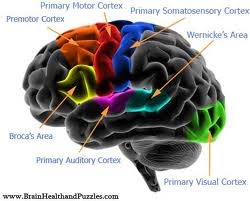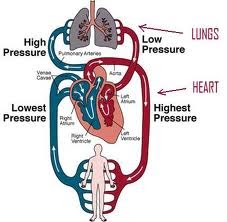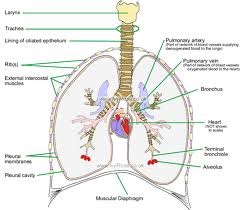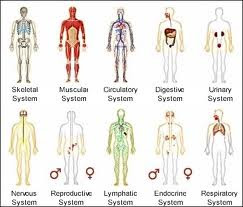Health Performer
Research on the Human Structure and Function's
11/10/2012
Function: Circulatory system, Respiratory system, Nervous system.
Nervous system
Nervous shown though the body in blue and red nervous shown in the lungs




The nervous start from the brain, the brain tells the foot to move though the spinal cord the spinal cord leads the the message from the brain to any part of the body, a message passes from the brain though the spinal cord down though the leg to the foots nervous.
Why is the Nerous System important to dancing:
The nervous tell which part of the body to move, the nervous control how we dance, if a dance if fluent or stiff.
Why is the Nerous System important to dancing:
The nervous tell which part of the body to move, the nervous control how we dance, if a dance if fluent or stiff.
Circulatory System
Heart

My understanding of the Circulatory System.
The Human Circulatory System connects all the organs together, the body needs oxgyen (O2) to work, when oxygen is taken in it goes though the lungs the oxgyen is taken and delivered to all parts of the body though the blood (red blood cells) that is pumping around the body constently.
Why is the Circulatory System important to dancing:
Before dancing we need to warm up our bodys, we need to increase our blood flow and heart beat and this is through the Circulatory System.
Red Blood Cells
My understanding of Red blood cells.
Red Blood cells are the most common type of blood cell and the vertebrate organism's principal means of delivering oxygen (O2) to the body tissues via the blood flow through the circulatory system.
They take up oxygen in the lungs and release it while squeezing through the body's capillaries.
These cells cytoplasm is rich in haemoglobin, an iron-containing biomolecule that can bind oxygen and is responsible for the blood's red color.In humans, mature red blood cells are oval and flexible biconcave disks. They lack a cell nucleus and most organelles to accommodate maximum space for haemoglobin. 2.4 million new erythrocytes are produced per second The cells develop in the bone marrow and circulate for about 100–120 days in the body before their components are recycled by macrophages. Each circulation takes about 20 seconds. Approximately a quarter of the cells in the human body are red blood cells.
Respiratory System


My understanding of The Respiratory System
The Respiratory system is the biological system of an organism that introduces respiratory gases to the interior and performs gas exchange. In humans the anatomical features of the respiratory system include airways, lungs, and the respiratory muscles
Structure : Skeleton, Joints, Muscles, Tendon, Ligaments
The Muscle structure
My understanding of the Muscular System
The muscular system is an organ system consisting of skeletal, smooth and muscles. It permits movement of the body, maintains posture, and circulates blood throughout the body. The muscular system in vertebrates is controlled through the nervous system,
Why are our Muslces important in dancing:
Our muslces allow us to have a bigger variaty of dancing stronger muslces allows us to hold our weight better for longer we are able to do more.
The Human Skeleton Structure



Immune System, Be Healthy
The human immune system is made up of a number of interdependentcell types which collectively porject the person's body from various parastic, fungal, bacterial and viral infections, as well as from the growth of tumor cells.
immune system organs
Bone marrow : every cell involved in a person's immune system is initally derivered from bone marrow.
Thymus : the Thymus function is to produce mature, T cells, immature tymocytes, also referred to as Prothymocytes, emerge from the person's bone marrow and move into thier thymus.
Spleen: a person's spleen lymph nodes work as an immunological filter for thier body fluid referred to as Lymph.
Immune System Cells
T cells : are also called T killer/suppressor cells and are important because they are involved in directly killing viral infected cells, specific tumor cells.
Natural Killer Cells : Natural killer cells are similar to cells from killer T cells.
B cells : The primary function of B cells is to produce antibodies in response to foreign such as viruses, bacteria and tumor cells.
The Immune System
- Enzyme - is a protein that helps speed up a chemical reaction in the body.
- Antigens - are substances that are recognized as a threat by the body's immune system, which triggers the formation of specific antibodies against the substance.
- Bone Marrow - is the soft tissue inside bones where blood cells are made.
- Lymphatic - is the condition of being protected against an infectious disease. Immunity often develops after a germ is introuduced to the body. one type of immunity occurs when the body make special protein molecules called antibodies to fight the disease-causeing germ. The next time that germ enters the body, the antibodies quickly attack it, usually preventing the germ from causing disease.
In some instances, people receive antibodies from another person to help their own immunity. This is known as passive immunity. infants are born with immature immune systems and receive important antibodies.
Bacteria : are microscopic organisms, some types of which can cause disease.
Fungi : are microorganisms that can grow in or on the body, causing infections of internal organs or of the skin, hair and nails.
Healthy Tips
- Eat a minimum of five portions of fresh fruit and veg every day . They are rich in vitamins, antioxidants and phytonutrients to help maintain a healthy immune system.
- stop smoking as smoke contains billions of free redicals which also damages the nasal lining and can greatly affect your immune resistance.
- Aviod stress as this can make your body feel down.
- Get more sleep, not getting enough sleep can reduce the effectiveness of your immune system by up to 50%.
- Take regular exercise to stimulate circulation and maintain a strong immune system.
- Avoid refined suger and fatty foods as these can affect normal healthy immune function.
Why it is important to be a healthy performer:
Every dancer should follow a healthy diet. The body performs at its best when filled with the the proper fuel. Dancing requires lots of energy, so dancers must consume enough calories to keep up with physical demands. A dancer's diet should consist of a balance of carbohydrates, proteins, fats, vitamins and minerals, and adequate fluids.







































































No comments:
Post a Comment